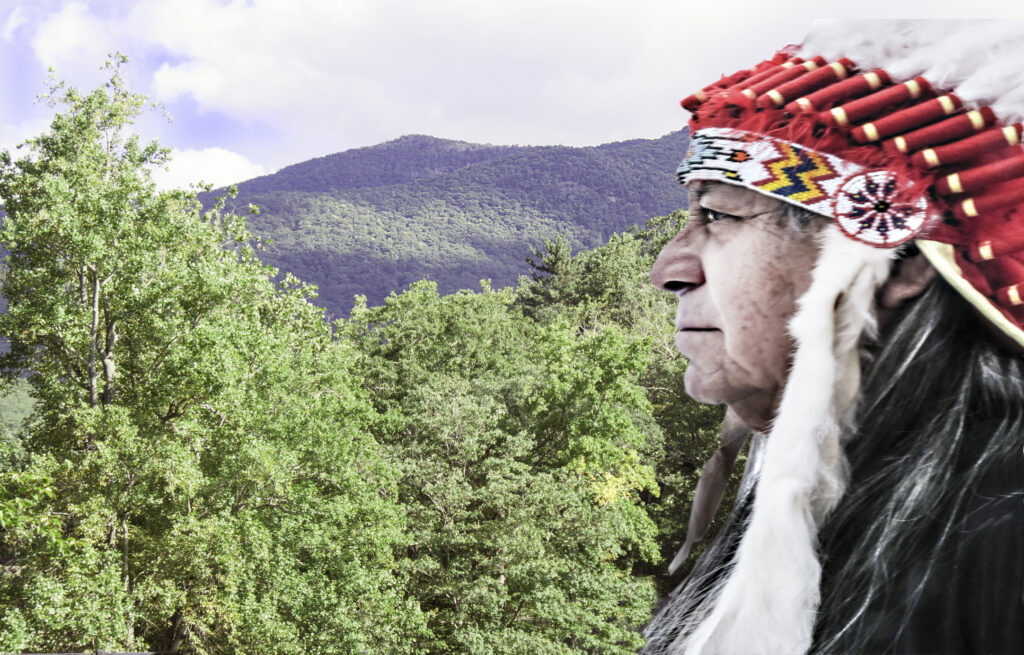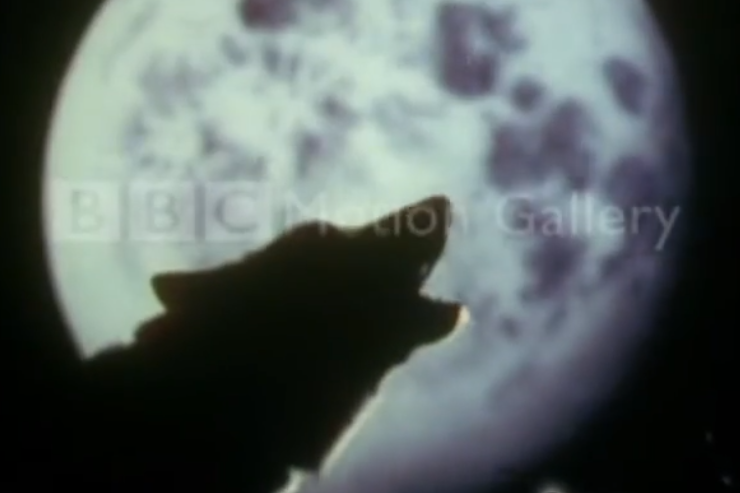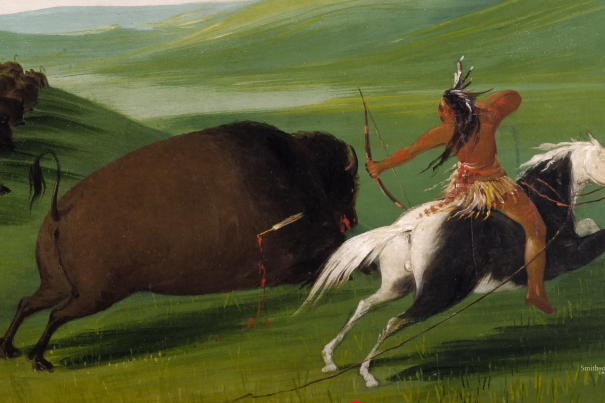1. Advanced Wildlife Conservation Practices Before Modern Science

Long before terms like “sustainability” and “ecosystem balance” became mainstream, Native American tribes were already living by these principles. Their approach to hunting, fishing, and gathering was deeply rooted in respect for nature and the understanding that taking too much could lead to long-term consequences. They practiced controlled burns to prevent devastating wildfires, managed fish populations by using selective harvesting techniques, and even had systems for ensuring certain hunting grounds could replenish themselves. Unlike the overexploitation seen in some industrial societies, their way of life ensured that nature thrived alongside human communities.
One of the most fascinating aspects of Native conservation methods was their spiritual connection to the animals they relied on. Many tribes believed that animals gave themselves to humans as a form of sacrifice, and in return, hunters were expected to show gratitude by using every part of the animal—bones for tools, hides for clothing, and meat for nourishment. Wastefulness was considered deeply disrespectful, and in some cultures, rituals were performed to honor the spirit of the animal. These practices not only maintained wildlife populations but also reinforced a sense of responsibility that is still relevant today.
2. Wolves Were Seen as Teachers and Guides, Not Just Predators

In many Native American traditions, wolves were far more than just wild animals—they were considered powerful spiritual guides and teachers. Tribes such as the Lakota, Pawnee, and Apache saw wolves as symbols of loyalty, intelligence, and survival. Unlike the European settlers who viewed them as threats to livestock and sought to exterminate them, Native people often learned from wolves, observing their hunting techniques and social structures to inform their own strategies. The deep respect for these animals shaped myths, ceremonies, and even battle tactics, with warriors modeling their formations after wolf packs.
This reverence for wolves was also tied to a broader worldview that saw all creatures as interconnected. Some tribes believed that a person who encountered a wolf in the wild might be receiving a message or lesson from the spirit world. Even today, many Indigenous activists advocate for wolf conservation, seeing their survival as a reflection of the balance between humanity and nature. While much of the Western world spent centuries trying to eradicate wolves, Indigenous wisdom understood their vital role in keeping ecosystems healthy.
3. The Bison Was More Than Just a Food Source—It Was the Center of Life

For the Plains tribes, the bison was not just an animal; it was life itself. Nearly every part of the bison was used for survival, from the meat that provided sustenance to the hides that became clothing, shelter, and tools. But beyond its practical use, the bison also held deep spiritual significance. Many tribes saw it as a gift from the Creator, an embodiment of abundance and resilience. Ceremonies and prayers were often conducted before a hunt, asking for the animal’s spirit to be honored and its sacrifice not to be in vain.
The near-extinction of the bison in the 19th century was not just an environmental tragedy—it was a deliberate act of cultural destruction. When the U.S. government and settlers wiped out millions of bison, they weren’t just attacking a food source; they were dismantling the foundation of an entire way of life. Today, many Native communities are working to restore bison populations, not just as a means of ecological restoration, but as a way to reclaim their heritage. The return of the bison is seen as a symbol of survival, proving that Native resilience is as strong as ever.
4. Salmon Were Sacred and Protected by Laws Older Than the U.S. Constitution

For many tribes in the Pacific Northwest, salmon were far more than just a food source—they were central to cultural identity and spiritual practice. Indigenous communities developed sophisticated fishing methods that ensured the salmon population remained strong, from using weirs and traps to selectively catching only the strongest fish. There were even unwritten but strictly followed laws about when and how many salmon could be caught, ensuring that future generations would always have enough.
The arrival of European settlers brought drastic changes. Dams, overfishing, and pollution devastated salmon populations, threatening not just an important resource but an entire way of life. Today, Native tribes are at the forefront of salmon conservation, fighting to remove dams and restore traditional fishing rights. Their efforts are not just about reclaiming what was lost—they are a testament to the enduring wisdom of Indigenous ecological knowledge. The fight for salmon is a fight for survival, not just of a species, but of a people’s culture and connection to the land.
5. The Eagle Is Not Just a National Symbol—It Has Been Sacred for Centuries

While the bald eagle is now a symbol of American pride, it has been revered by Native American tribes for far longer. Many Indigenous cultures see eagles as messengers between humans and the Creator, with their ability to soar high above the earth symbolizing a connection to the divine. Eagle feathers hold immense spiritual power and are often used in ceremonies, given as marks of honor, and worn by leaders and warriors as symbols of courage and wisdom.
Because of this deep reverence, eagles were never hunted carelessly. Feathers were traditionally obtained through natural molting or carefully conducted rituals. Today, the connection remains strong, with federal laws protecting eagle feathers for use by recognized Native tribes in cultural and spiritual practices. While the bald eagle is now a national emblem, its meaning in Native traditions runs much deeper, representing not just freedom, but a sacred bond with the spiritual world.
6. Native American Astronomy Was Based on the Movements of Animals

Long before modern telescopes, Native American tribes used the stars to track seasons, migrations, and even spiritual events. What’s fascinating is that many of their celestial observations were deeply tied to wildlife behavior. The Lakota people, for example, named certain constellations after animals, using their positions in the sky to predict when bison would move or when it was time to plant crops. This connection between the stars and the natural world showed a profound understanding of the cycles of life and the interconnectedness of all things.
Some tribes even built structures aligned with astronomical events, similar to Stonehenge. The Chaco Canyon civilization, for example, constructed buildings and petroglyphs that marked solstices and equinoxes, likely helping them plan their agricultural and hunting activities. Their knowledge of astronomy wasn’t just about looking at the stars—it was about understanding the rhythms of the earth and living in harmony with them. This level of sophistication challenges the simplistic narratives often taught in school about Indigenous knowledge systems.
7. Indigenous Fire Management Was Smarter Than Modern Firefighting

For centuries, Native American tribes used controlled burns to manage forests and grasslands, a practice that prevented the kind of catastrophic wildfires we see today. Unlike modern firefighting, which often suppresses all fires until they become unmanageable, Indigenous fire management recognized that smaller, frequent fires were essential for a healthy ecosystem. These burns cleared out dead vegetation, enriched the soil, and encouraged the growth of plants that provided food for both humans and wildlife.
Many tribes, including the Karuk and Yurok in California, saw fire as a necessary tool for maintaining balance in nature. They understood that some trees, like certain pines, actually need fire to release their seeds. After European settlers banned Indigenous burning practices, forests became overgrown, leading to the kind of uncontrollable wildfires we now struggle to contain. Today, scientists and firefighters are finally beginning to embrace traditional fire management, proving that Native knowledge has always been ahead of its time.
8. Native Tribes Developed the First National Parks—But Were Later Forced Out

When people think of America’s national parks, they often picture untouched wilderness, but what they don’t realize is that many of these lands were carefully managed by Native tribes for thousands of years. Areas like Yellowstone, Yosemite, and the Great Smoky Mountains were not just wild spaces—they were homelands, full of villages, trade routes, and cultural sites. Native people shaped these landscapes by planting medicinal herbs, using fire to maintain open meadows, and creating sustainable hunting grounds.
Ironically, when the U.S. government established national parks, they forced the very people who had cared for these lands off their ancestral territories. The idea of “preserving nature” often ignored the fact that Indigenous communities had been its stewards all along. Today, many tribes are working to reclaim their roles in managing these lands, with some national parks now partnering with Native groups to restore traditional practices. The truth is, America’s most beautiful landscapes didn’t remain pristine by accident—they were nurtured by Native hands.
9. Totem Poles Were More Than Just Art—They Were Storytellers

Many people see totem poles as decorative pieces of Indigenous art, but they were actually sophisticated storytelling tools, rich with history and meaning. Each pole was carved with symbols representing family lineage, historical events, and spiritual beliefs. In many Northwest Coast tribes, totem poles served as records of ancestry, marking important moments like births, marriages, and victories in battle. They were not worshipped, as some outsiders assumed, but were instead visual histories that passed down cultural identity through generations.
The artistry behind totem poles was also deeply connected to the natural world. Tribes used massive cedar trees, carving intricate designs that often featured animals with symbolic meaning—ravens for intelligence, bears for strength, and orcas for family unity. Sadly, when colonization disrupted Native traditions, many totem poles were stolen or destroyed. However, today, Indigenous carvers are reviving this practice, ensuring that these visual stories continue to stand tall for future generations.
10. The First Native Olympian Was Disrespected Despite Winning Gold

Jim Thorpe, a member of the Sac and Fox Nation, is often called the greatest athlete of all time, yet his story is rarely given the recognition it deserves. At the 1912 Olympics, he won gold medals in both the pentathlon and decathlon, dominating events from long jump to javelin throw. But instead of being celebrated, he faced racism and discrimination. Officials stripped him of his medals over a minor technicality—he had once played minor league baseball, which supposedly made him a “professional” athlete.
This injustice reflected a broader pattern of Native achievements being erased or undermined. Even though Thorpe went on to have a successful career in football and baseball, his Olympic records were ignored for decades. It wasn’t until 1983—thirty years after his death—that his medals were finally restored. His story is a reminder of how Native American excellence has often been met with resistance, even in arenas where talent should speak for itself.
11. Native Farmers Gave the World Some of Its Most Important Crops

Many people don’t realize that some of the most common foods in the world today—corn, beans, squash, potatoes, and tomatoes—were first cultivated by Native American farmers. The “Three Sisters” method, used by tribes in the Northeast and Midwest, was an advanced agricultural technique where corn, beans, and squash were planted together to support each other’s growth. This method provided balanced nutrition while enriching the soil naturally, long before the invention of chemical fertilizers.
European settlers quickly adopted these Native crops, and they spread across the globe. Yet, despite their agricultural genius, Native farmers were often pushed off their lands and denied the right to grow food for themselves. Today, Indigenous food sovereignty movements are bringing traditional farming methods back, helping communities reclaim their self-sufficiency and reconnect with their heritage. The world owes much of its diet to Native innovation, yet their contributions are rarely acknowledged in history books.
12. Powwows Are More Than Just Performances—They Are Acts of Resistance

To outsiders, powwows may seem like colorful dance performances, but for Native communities, they are much more than that. These gatherings are cultural celebrations, honoring traditions, ancestors, and resilience. During the late 19th and early 20th centuries, the U.S. government tried to ban Native ceremonies, viewing them as threats to assimilation. But tribes continued to hold powwows in secret, keeping their culture alive even under oppression.
Today, powwows have become symbols of survival and pride. Dancers wear intricate regalia that tells personal and tribal stories, and drumming carries deep spiritual meaning. These events bring Native and non-Native people together, serving as reminders that Indigenous culture is not a relic of the past—it is alive, evolving, and thriving. Powwows are not just performances; they are declarations of identity and an unbreakable connection to history.


